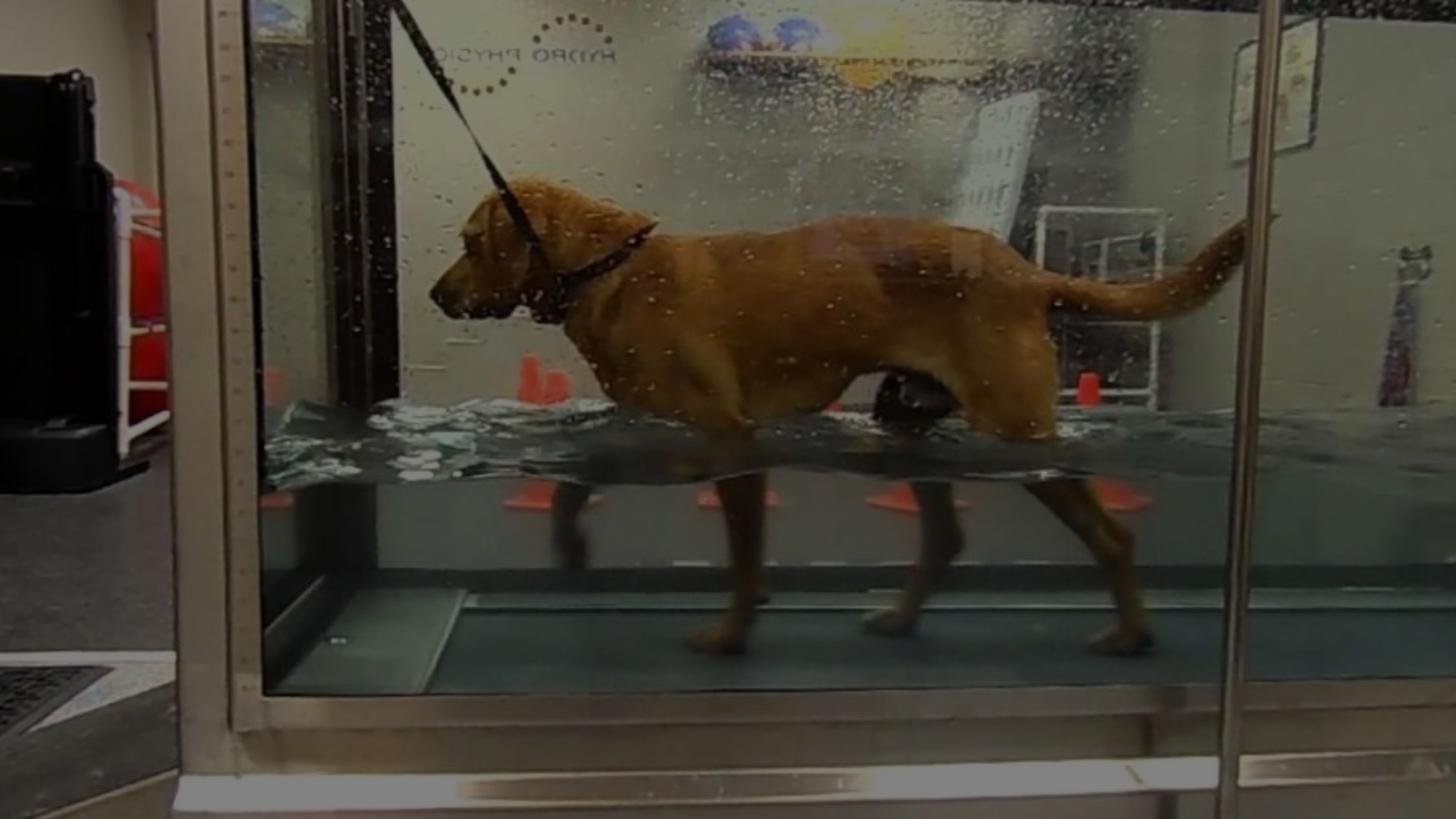When your beloved canine companion suffers a broken or fractured pelvis, it can be a distressing experience. However, your furry friend can heal and regain mobility with proper care and attention. Learn how to lift a dog with a broken pelvis. This comprehensive guide will walk you through the essential steps for caring for a dog with a fractured pelvis. From confinement to lifting techniques, we’ve got you covered.
Common Causes of a Broken Pelvis in Dogs
A broken pelvis in dogs can be a painful and distressing experience. Understanding the causes and taking preventive measures can help keep our furry friends safe. Let’s explore the common reasons behind pelvic fractures:
Motor Vehicle Trauma:
- Most Frequent Cause: Dogs hit by cars often suffer pelvic fractures. Young, non-neutered males who roam freely are particularly vulnerable.
- Prevention: Keep your dog confined within a fenced area or leash walk to avoid motor vehicle accidents.
Falls and High Impact:
- Dogs falling from heights or experiencing significant impact (such as a hard landing) can fracture their pelvis.
- Prevention: Secure balconies, windows, and elevated surfaces to prevent falls.

Fights with Other Animals:
- Aggressive encounters with other dogs or animals can lead to pelvic injuries.
- Prevention: Supervise interactions and avoid situations where fights may occur.
Disease and Osteoporosis:
- Certain diseases, including cancer, weaken bones and increase the risk of fractures.
- Prevention: Regular veterinary check-ups and early detection of underlying conditions.
Congenital Abnormalities:
- Some dogs are born with structural abnormalities in their pelvis, making them more prone to fractures.
- Prevention: Breeding practices should consider genetic health.
Signs of a Broken Pelvis
- Acute, Non-Weight Bearing Lameness: Dogs with pelvic fractures often avoid putting weight on their hind legs.
- Pain and Discomfort: Whining, limping, and reluctance to move.
- Swelling and Bruising: Obvious signs of trauma around the pelvic area.
Diagnosis and Treatment
Physical Examination:
- Veterinarians assess symptoms and perform chest radiographs to rule out lung injuries.
- Neurologic examinations check for nerve damage.
- Pelvic radiographs confirm the fracture.

Emergency Care:
- Stabilize concurrent injuries caused by trauma.
- Surgical stabilization of bone fragments may be necessary.
- Injectable pain medications provide relief during hospitalization.
Home Care and Rehabilitation:
- Strict exercise restriction if surgery is not required.
- Surgical cases need to monitor healing and gradual activity increase.
- Regular recheck appointments to evaluate progress.
Remember, while accidents happen, preventive measures and prompt veterinary attention can minimize the risk of pelvic fractures in our canine companions.
How do you lift a dog with a broken pelvis?
Confining Your Dog
Choosing the Right Crate
Your dog’s recovery begins with providing a safe and comfortable space. Opt for a crate that allows your dog to stretch out fully. Remember, they’ll spend most of their time here during the healing process. If your dog is too large for a crate, consider using a small room (or even a closet) instead. The ideal crate size ensures your dog can move, change positions, and access toys.
Recommended Recovery Crate Sizes:
- Small to medium dogs: Use an XL crate (29.5 in × 41 in) or an XXL crate (37 in × 45 in).
- Larger breeds: Opt for room rest rather than crate rest.
Creating a Cozy Environment
Line the crate with soft blankets and towels. Your dog won’t be very mobile initially, so prioritize comfort. Pillows and cushions can add extra coziness. If you use a dog bed, choose one without raised sides for easy maintenance.
Entertainment and Distraction
While on crate rest, boredom can set in. Provide toys and bones to engage your dog’s mind. Consider treat-dispensing toys or sturdy chew bones. Set up the crate in a high-traffic area so your dog can see and hear family members.
Patience and Rest
Your pet needs at least 6 weeks of rest for proper healing. Pelvic fractures take time, so be patient. If your dog doesn’t voluntarily stand after 2 weeks, use a sling to support their weight and encourage standing. Place a towel or blanket under their abdomen and lift gently.
Lifting Techniques
Avoid Further Injury
When lifting your dog, avoid putting pressure on their belly, as it can worsen the pelvic injury. Instead, lift them from their chest using your arms or a towel under their armpits. Keep your dog close to your body and minimize jostling during transport.
Using a Sling
Create a makeshift sling using a towel or blanket to lift your dog safely. Slide it under your dog’s abdomen, then lift both sides evenly. This provides support and stability while preventing unnecessary strain on the pelvis.

Gentle and Supportive
Remember, your dog is in pain, so handle them gently. Speak soothingly and reassure them during the lifting process. Avoid sudden movements and ensure a smooth transition from one surface to another.
How Long Does It Take for a Dog’s Pelvis to Heal?
Healing time for a dog’s pelvis depends on several factors, including the severity of the fracture, the dog’s overall health, and the treatment provided. Generally, a dog’s pelvis takes approximately 6 to 8 weeks to heal. However, let’s delve deeper into the healing process:
Conservative Management (Non-Surgical Approach):
- For stable fractures or when surgery is not feasible, conservative management involves rest and restricted activity.
- Timeline: Expect at least 6 weeks of confinement. During this period, your dog should avoid strenuous activities like jumping and running.
Surgical Intervention:
- The healing process may vary in unstable fractures or when surgery is recommended.
- Timeline:
- Immediate Post-Surgery: Your dog will need strict rest for the first 2 weeks.
- Weeks 2 to 4: Gradual increase in activity, controlled leash walks.
- Weeks 4 to 6: Continued leash walks and monitored rehabilitation.
- Weeks 6 to 8: Gradual return to regular activity, as advised by your veterinarian.
Monitoring and Follow-Up:
- Regular veterinary check-ups are essential.
- X-rays help assess bone healing progress.
- Adjust the timeline based on your dog’s response and any complications.
Can Dogs With Pelvic Fractures Walk?
Dogs with pelvic fractures can indeed walk, but the timing and approach depend on the severity of the fracture and the treatment they receive. Let’s break it down: Conservative Management (Non-Surgical Approach):
- If your dog has a stable pelvic fracture and surgery is not necessary, conservative management involves rest and restricted activity.
- Walking Ability: During this period, your dog can walk, but keeping them on a leash and avoiding strenuous activities is essential. Short, controlled walks are encouraged to prevent muscle atrophy and maintain joint mobility.

Surgical Intervention:
- The healing process may differ for unstable fractures or when surgery is recommended.
- Immediate Post-Surgery: Your dog will need strict rest for the first 2 weeks after surgery.
- Gradual Progression: Leash walks are gradually introduced over the next few weeks. Your veterinarian will guide you at the appropriate pace.
- Monitoring: Regular follow-up appointments and X-rays help assess bone healing progress.
Individual Variation:
- Each dog responds differently. Some may regain walking ability sooner, while others may take longer.
- Pain Management: Pain relief is crucial during the healing process. Your vet will prescribe appropriate medications.
Conclusion
Caring for a dog with a broken pelvis requires patience, love, and attention. By following these guidelines, you’ll provide the best possible care for your furry companion. Remember, healing takes time, but with your support, your dog will soon be back on its paws, wagging its tail again.







